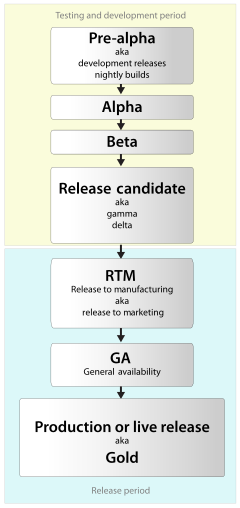This article needs additional citations for verification. (April 2023) |
The software release life cycle is the process of developing, testing, and distributing a software product (e.g., an operating system). It typically consists of several stages, such as pre-alpha, alpha, beta, and release candidate, before the final version, or "gold", is released to the public.

Pre-alpha refers to the early stages of development, when the software is still being designed and built. Alpha testing is the first phase of formal testing, during which the software is tested internally using white-box techniques. Beta testing is the next phase, in which the software is tested by a larger group of users, typically outside of the organization that developed it. The beta phase is focused on reducing impacts on users and may include usability testing.
After beta testing, the software may go through one or more release candidate phases, in which it is refined and tested further, before the final version is released.
Some software, particularly in the internet and technology industries, is released in a perpetual beta state, meaning that it is continuously being updated and improved, and is never considered to be a fully completed product. This approach allows for a more agile development process and enables the software to be released and used by users earlier in the development cycle.